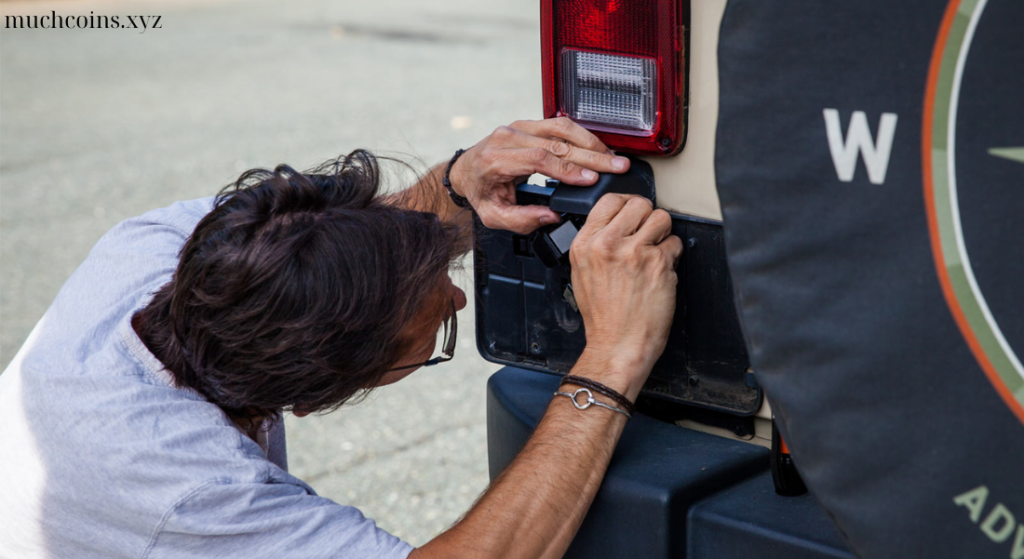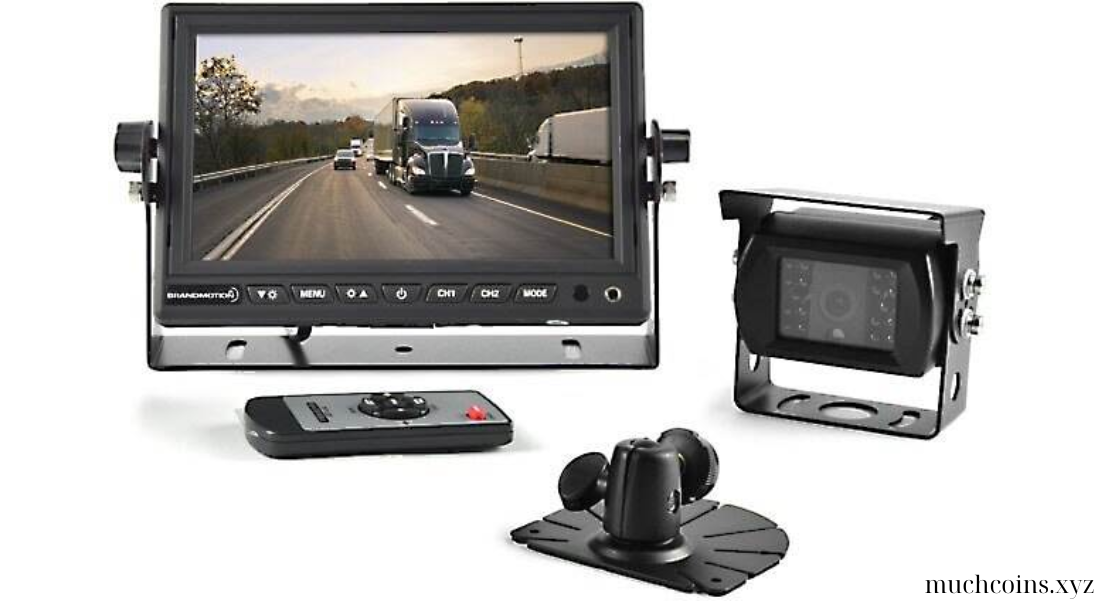A backup camera is an essential safety feature for any vehicle, helping drivers navigate in reverse with enhanced visibility and accuracy. With a backup camera, you can avoid obstacles, park with precision, and gain a clear view of what’s behind your vehicle, reducing the risk of accidents. However, not all backup cameras are created equal, and selecting the right one requires understanding key features that can make a significant difference in performance and safety. Here’s a guide to the most important features to consider when choosing a car backup camera.
Key Highlights
- Why Backup Cameras Are Essential: Enhanced safety and visibility while reversing.
- Top Features to Look For: Field of view, resolution, night vision, and more.
- Benefits of Each Feature: How specific features improve performance and convenience.
- Choosing the Right Camera for Your Needs: Factors to consider for optimal functionality.
1. Field of View
The field of view (FOV) is a critical feature in any backup camera as it determines how much area you can see behind your vehicle. A wider field of view provides more coverage, but too wide an angle can sometimes distort the image.
- 120-130 Degrees: Ideal for smaller vehicles, providing a balanced view without much distortion.
- 150-170 Degrees: Suitable for larger vehicles like trucks or SUVs, capturing a wider area to ensure no blind spots.
- 180 Degrees: Offers maximum coverage, but may cause a slight “fisheye” effect, which can distort objects at the edges of the screen.
2. Resolution
Resolution affects the clarity and detail of the camera’s image. Higher resolution means sharper images, which can be helpful in identifying objects or obstacles with precision. Look for a camera with at least 480p for basic clarity, but higher is preferable.
- 480p (Standard Definition): Provides basic image quality, suitable for most general use.
- 720p or Higher (High Definition): Ideal for drivers who want clear, sharp visuals; helpful in low-light conditions or busy parking lots.
- 1080p (Full HD): Delivers excellent clarity and detail, best for those who want the most accurate visual feedback.

3. Low-Light or Night Vision Capability
Night vision or low-light capability is essential for safe reversing in dim lighting or nighttime conditions. Many backup cameras include infrared (IR) LEDs or low-light sensors to enhance visibility when lighting is limited.
- Infrared (IR) LEDs: Illuminate the area behind the car, offering clear visibility in the dark.
- Low-Light Sensors: Capture more natural colors in low-light conditions, providing accurate visuals without artificial lighting.
- High Dynamic Range (HDR): Some high-end cameras come with HDR, improving clarity in both bright and dark areas by adjusting exposure levels.
4. Parking Guidelines
On-screen parking guidelines are helpful for judging distances and positioning while reversing. Some cameras offer static guidelines, while others provide dynamic guidelines that move as you turn the steering wheel.
- Static Guidelines: Fixed lines that provide a simple frame of reference, ideal for straightforward parking.
- Dynamic Guidelines: Lines that move based on steering angle, giving a more intuitive sense of how the car will move, especially useful for parallel parking or navigating tight spaces.
5. Weatherproofing
Since backup cameras are mounted outside the vehicle, they need to be durable enough to withstand various weather conditions, including rain, snow, and dust. Look for cameras with an IP (Ingress Protection) rating to ensure they are weatherproof.
- IP67: Provides sufficient protection against rain and dust, suitable for most climates.
- IP68: Offers more robust waterproofing, making it ideal for regions with heavy rain or snowy conditions.
6. Mounting Options
Backup cameras come with different mounting options, each offering unique advantages based on your vehicle type and preference.
- License Plate Mount: Easy to install, as it attaches directly to the license plate frame. This option provides a centered view and doesn’t require drilling.
- Flush Mount: Installed directly into the bumper for a clean, factory-installed look. Offers a stable view but may require drilling.
- Bracket Mount: Often positioned above the license plate or on the trunk, giving a higher perspective that can capture more of the rear surroundings.
7. Wired vs. Wireless Connectivity
Choosing between a wired and wireless backup camera depends on your preference and vehicle setup.
- Wired: Offers a stable, interference-free connection with consistent image quality, but installation requires routing cables through the vehicle.
- Wireless: Easier to install, as it uses a transmitter to send the video signal. However, wireless cameras can sometimes experience signal interference, especially in busy areas.
8. Display Compatibility
It’s essential to ensure your backup camera is compatible with your vehicle’s display screen. Some backup cameras connect directly to a vehicle’s built-in infotainment system, while others require a separate monitor or rearview mirror with a screen.
- In-Dash Display: Many modern cars have an in-dash display that supports backup cameras, providing seamless integration.
- Rearview Mirror Monitor: Some cameras are compatible with rearview mirrors that include a built-in screen, saving space on the dashboard.
- Separate Monitor: If your car lacks a built-in display, look for a kit that includes a separate monitor that can be mounted on the dash.
9. Image Adjustment Features
Advanced image adjustment options can enhance visibility and make the backup camera more versatile, especially in challenging lighting conditions.
- Brightness and Contrast Adjustment: Allows you to modify the screen for better visibility in low-light or bright conditions.
- Mirroring Option: Some cameras offer mirroring, which can flip the image horizontally, providing a view that more accurately reflects what you see in the rearview mirror.
10. Cost and Warranty
When choosing a backup camera, consider your budget and the warranty offered by the manufacturer. Higher-end cameras often provide additional features like dynamic guidelines, HD resolution, and superior durability, which can be worth the investment.
- Budget-Friendly Options: Offer basic functionality and are suitable for general reversing needs.
- Mid-Range Cameras: Provide enhanced features like night vision and parking guidelines, balancing quality with affordability.
- Premium Cameras: Include advanced features like HDR, dynamic guidelines, and high-definition resolution, often backed by extended warranties for peace of mind.
Conclusion
Choosing the best backup camera for your vehicle depends on understanding the features that will make reversing safer and more convenient. A quality backup camera with the right field of view, high resolution, night vision, and other essential features can make all the difference in enhancing safety and confidence on the road. Whether you prioritize image clarity, weatherproofing, or ease of installation, investing in the right backup camera ensures that you have a reliable, clear view of what’s behind you, helping you navigate and park with peace of mind.
FAQ
What field of view is best for a backup camera?
A field of view between 120 and 170 degrees is ideal. Smaller vehicles can use a narrower field of view, while larger vehicles benefit from a wider angle for maximum visibility.
Do all backup cameras have night vision?
Not all backup cameras have night vision, but many include infrared LEDs or low-light sensors for better visibility in dark conditions.
Can I install a backup camera myself?
Yes, many backup cameras come with installation kits and instructions. However, if you’re unsure, it’s best to have a professional install it, especially if wiring is involved.
Are wireless backup cameras reliable?
Wireless cameras are generally reliable, but some may experience signal interference, especially in areas with many wireless devices. Wired cameras offer a more stable connection.
Where can I buy a quality backup camera?
Backup cameras are available at automotive stores, online retailers, and electronics shops. Look for reputable brands that offer a good warranty and customer support.
